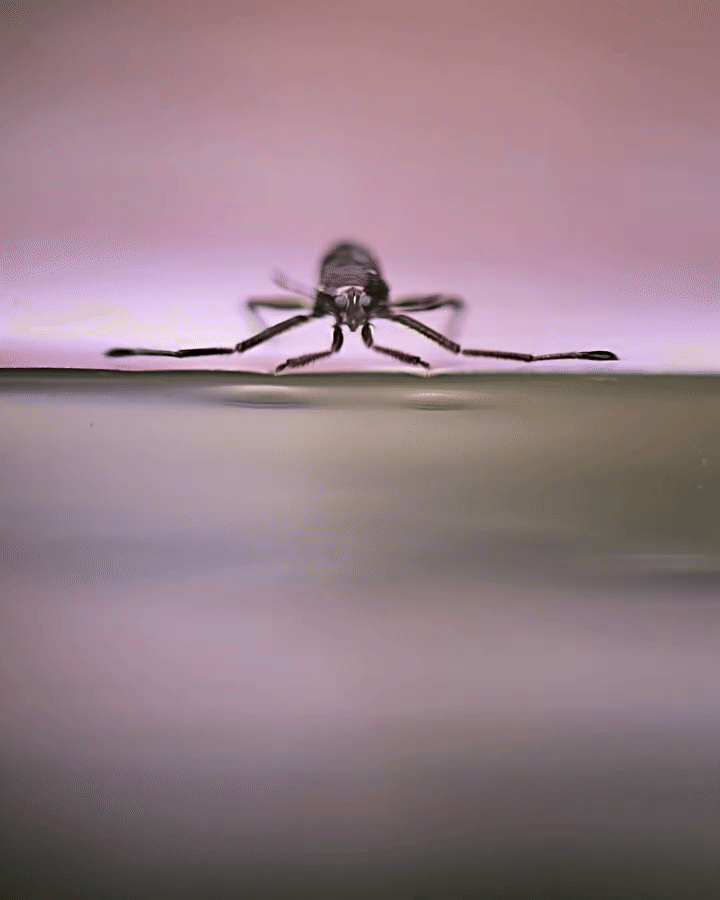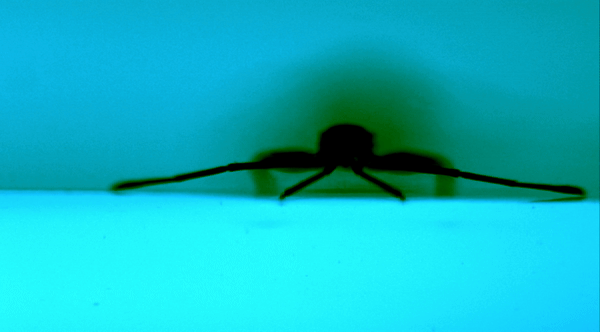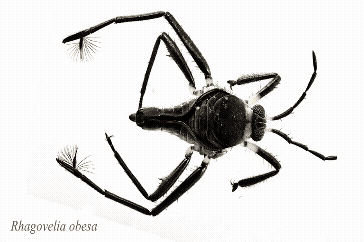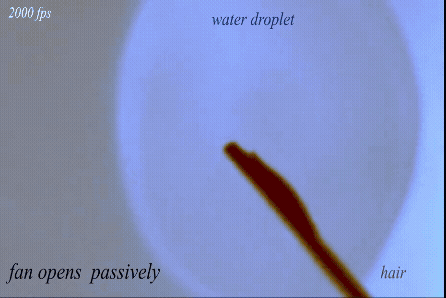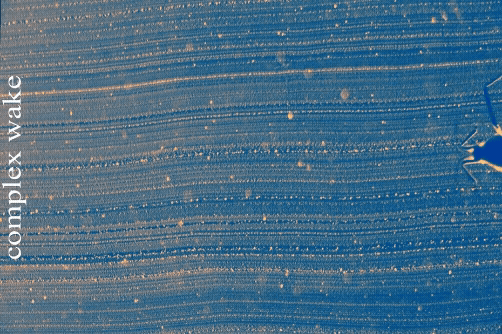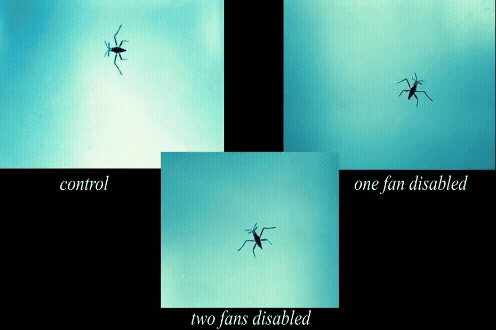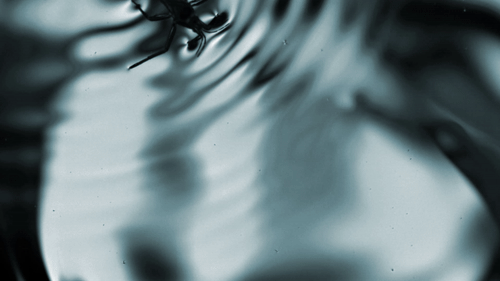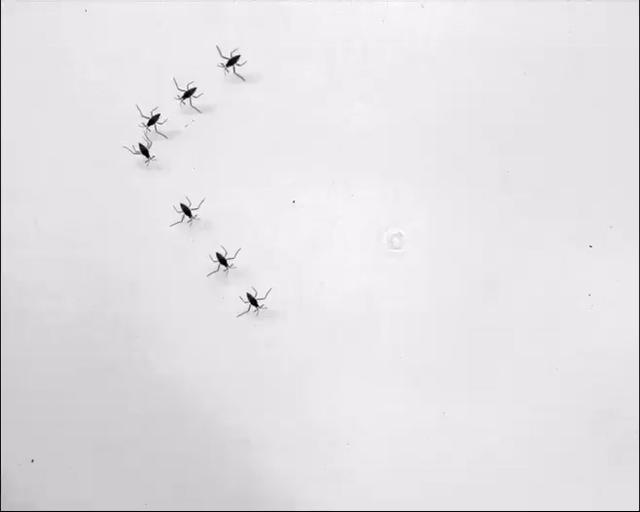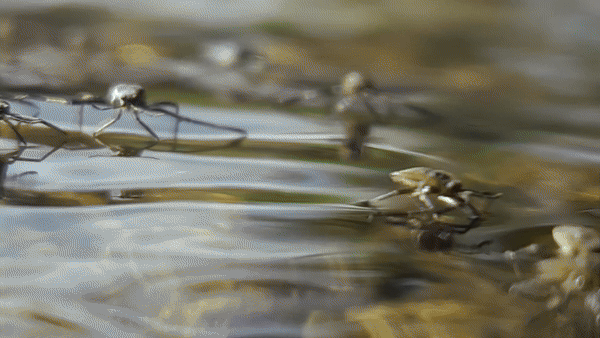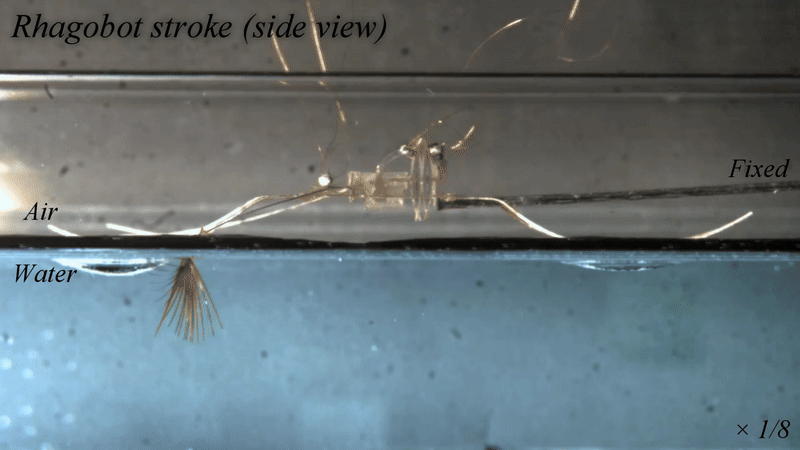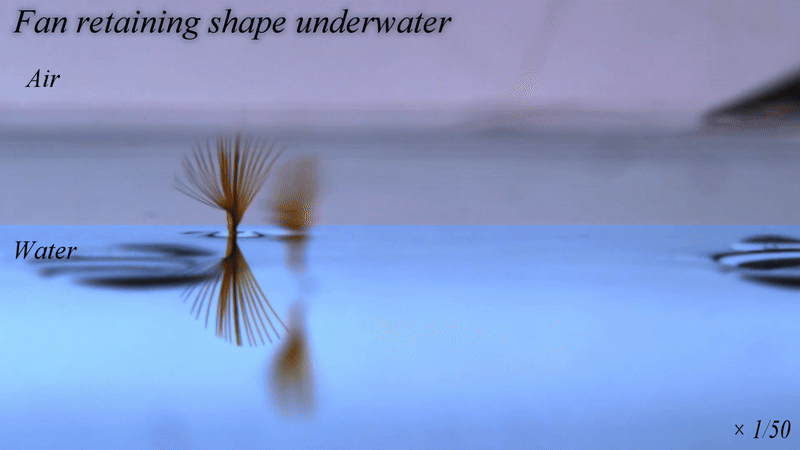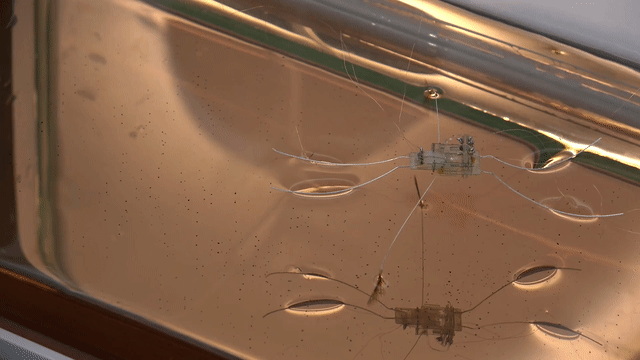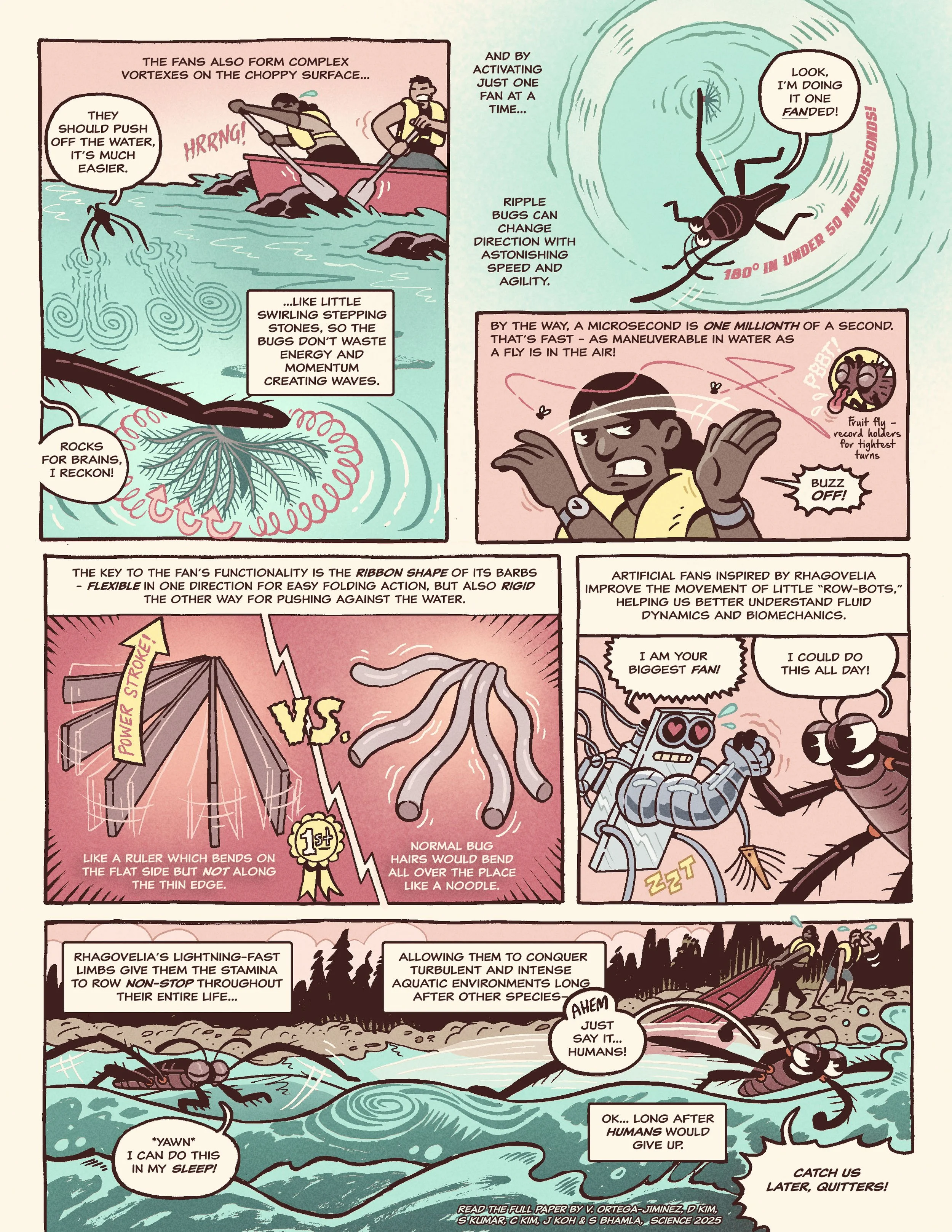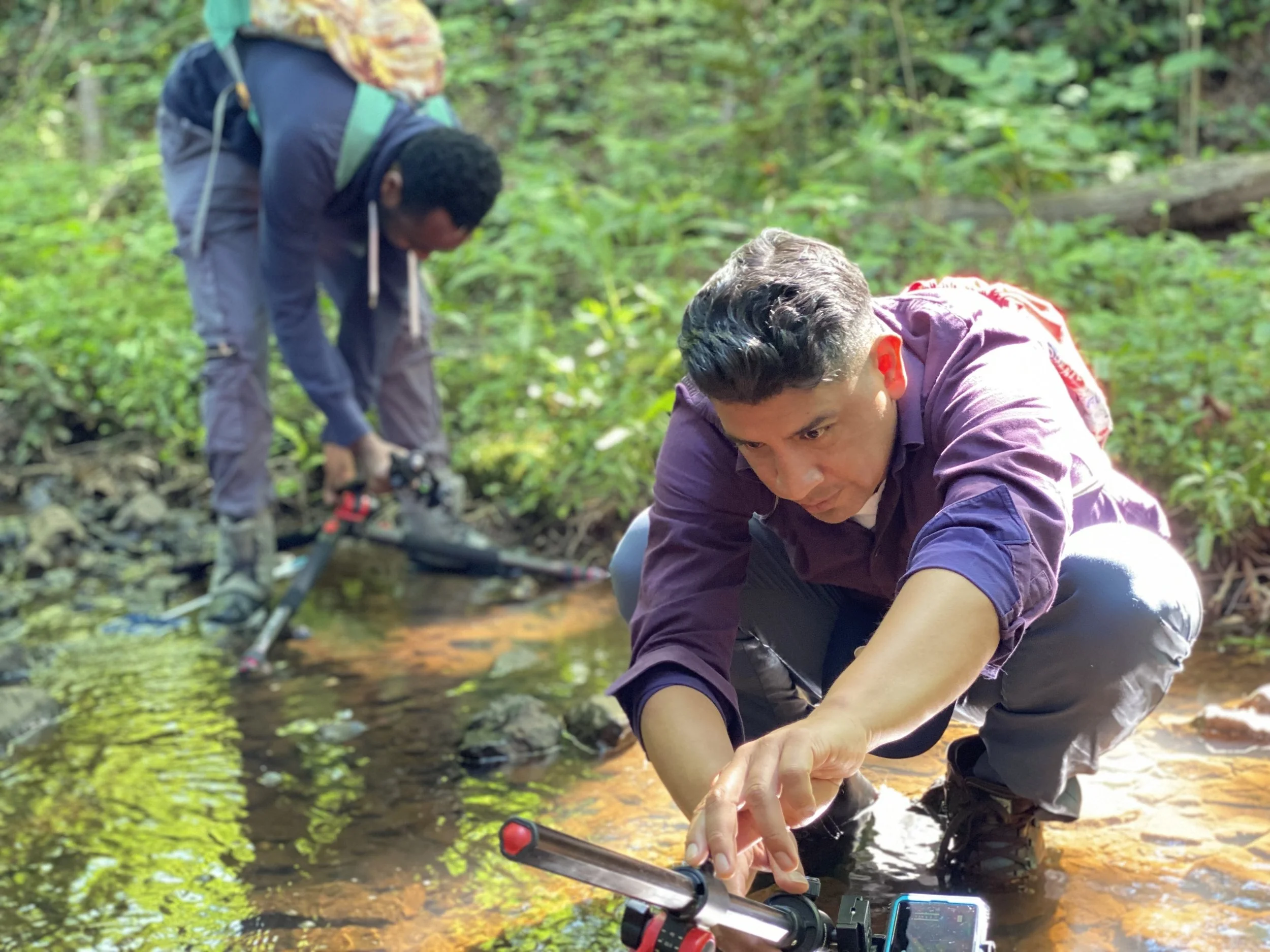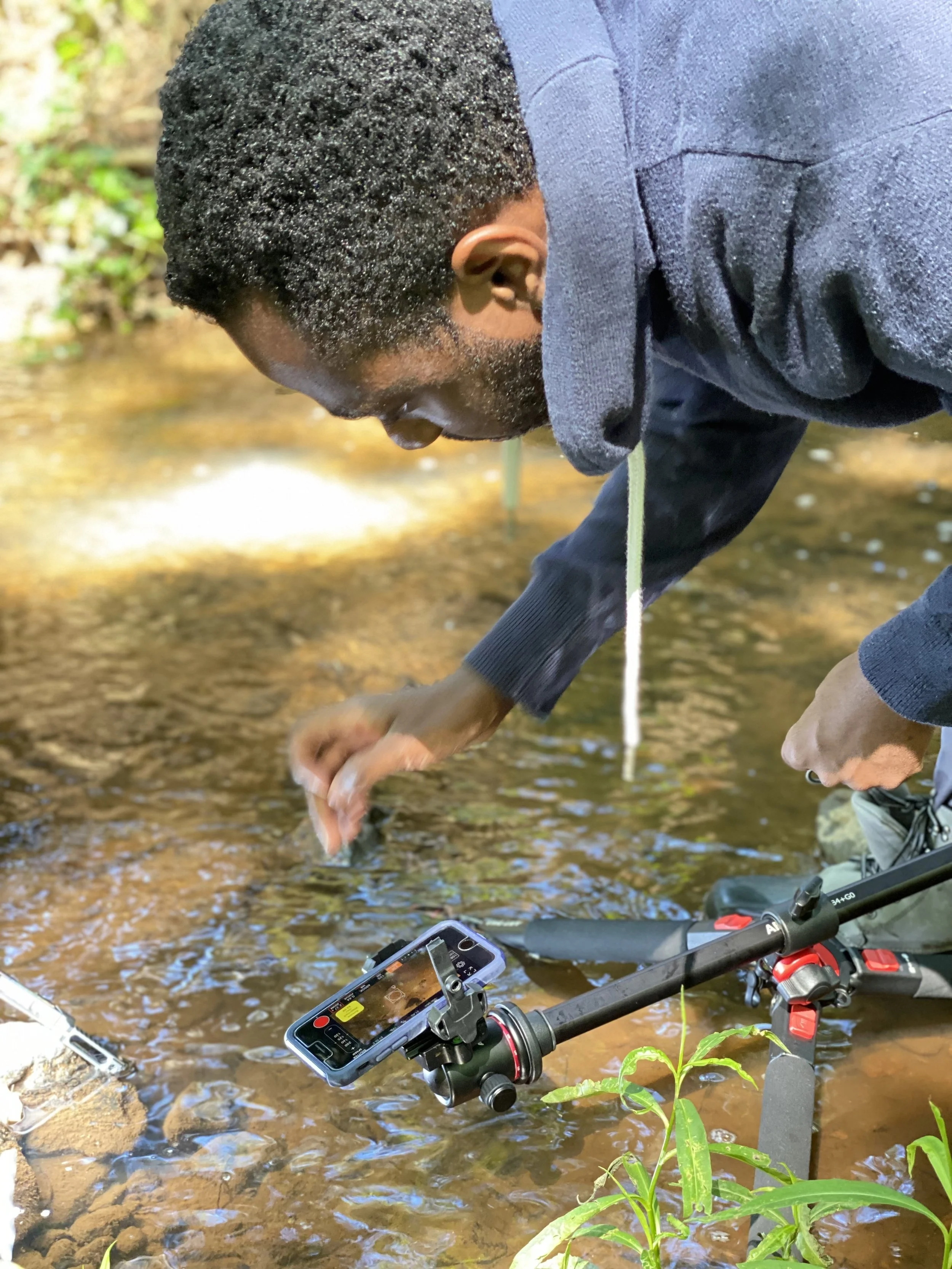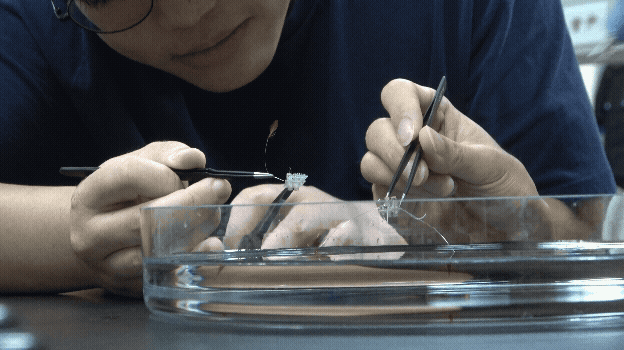Rapid Ripple Bugs
How insects harness TIny fans to surf turbulent streams
Rhagovelia (or Ripple bugs) are aquatic insects about the size of a grain of rice and are stream-surfing experts that glide across fast-flowing water. While most insects would be swept away, these bugs maintain precise control even in turbulent water. They do this using fans on their middle legs that open and close during each stroke. The fans increase drag when pushing against water and collapse during recovery to reduce resistance.
What makes this system remarkable is that the fans operate passively, powered by what we call a “surface tension battery”. Instead of using muscle, they tap into the invisible energy stored at the air-water interface. This is a process known as elastocapillary morphing, where the interplay between water’s surface tension and the fan’s built-in springiness drives motion automatically. It’s a striking example of interfacial intelligence, where movement and control emerge from shape and material design rather than motors or active control.
We collaborated with researchers from UC Berkeley (USA) and Ajou University (South Korea) to engineer an insect-scale robot with flat-ribbon, self-morphing fans that open and close on their own using water surface forces. Like the ripple bug, it can turn rapidly, brake sharply, and propel forward with high efficiency, all without extra energy input.
THIS PROJECT HAS BEEN FEATURED IN The New York Times
Major questions
How do ripple bugs control such fast and agile movements on water?
Can capillary forces, rather than muscles, drive rapid fan deployment?
What mechanics make the fan both collapsible and strong?
Can we replicate this mechanism in robotics?
what we’ve discovered
Faster than a blink
Rhagovelia’s middle-leg fan deploys at high speed, 10 times faster than the blink of an eye, snapping open in just 10 milliseconds the moment it touches water. No muscles are involved. Instead, this motion is powered by elastocapillary morphing, a passive mechanism where surface tension and directional stiffness work together to automatically unfold the fan for thrust.
Directional Stiffness Drives Snap-Open Motion
The fan isn’t just a “floppy brush”, it’s engineered with directional stiffness. That means it bends easily in one direction (to fold up during the recovery stroke), but resists bending in the other (so it can push hard during propulsion). This balance is possible because of its flat-ribbon barbs, which have different stiffness around the y-axis (for collapse) and z-axis (for resisting drag).
Collapsible Yet Strong
The rhagovelia’s fan is a flat, ribbon-like barbs and barbules that are stiffer along one axis than the other. This varying stiffness allows the fan to collapse easily in one direction (reducing drag recovery), but resist deformation during power strokes (maximizing propulsion). This dual property enables the fan to be both collapsible and load-bearing, which is the key to effective and efficient rowing.
Agile on the water’s surface
When the fan is open, the surface area of the leg is dramatically increased, allowing it to generate large drag forces during power strokes. This is how they can produce thrust and perform high-speed maneuvers, enabling body rotations of 90° in just 50 milliseconds (0.05 seconds) at 4,200° per second, one of the fastest aquatic turning rates ever recorded.
Dual Control System
While the fan mostly opens passively when touching water, the bug also has a backup: it can use its claw muscles to manually fold or unfold the fan if needed. This combination of passive elastocapillary morphing and active muscle input gives Rhagovelia precise control, even when underwater or mid-maneuver.
Harnessing Vortices
High speed images revealed that the fan generates dipolar vortices with every stroke. These create extra momentum and help the bug spin fast and stop sharply. By analyzing the flow around the ripple bigs with and without fans, we found that with fans nearly double the speed of water being pushed during each stroke. More flow results in more thrust. So it’s not just about leg speed, but about how well they move the water below them. The fans produce capillary waves, which ripple across the surface in patterns.
Sharp Turns, More Meals
Modeling shows that Rhagovelia’s zigzagging isn’t just random, but uses a run-and-tumble motion which significantly boosts encounter rates, especially when food drifts rapidly in flowing water. As drift speeds increase, sharper reorientations (130–150°) outperform straight-line movement, helping the bugs intercept food more effectively. Heatmaps from our simulations confirm that the right balance of zigzagging maximizes capture success.
Run, Tumble, Catch
Not all turning styles are equally effective for Rhagovelia. Our simulations showed that extreme turns around 180° actually reduced food capture, sometimes performing worse than going straight. This highlights the importance of balance—too little turning misses chances, while too much wastes effort. Rhagovelia’s run-and-tumble is a finely tuned strategy shaped by evolution, and our observations confirm that the ripple bug consistently performs ~30 mm runs with steady tumble angles across low-to-high flow speeds.
RHagobot
Snapping Open with Surface Tension
The Rhagobot’s 1 mg elastocapillary fan, laser-cut from polyimide, passively opens and closes using surface tension—no motors needed. Like Rhagovelia’s fan, it spreads on contact with water and folds in under 120 ms when lifted. Its directional stiffness (flexible for folding, stiff against drag) mirrors the insect’s flat-ribbon design, boosting speed by 41% and acceleration by 60%.
Engineered for Agility
Outfitting the robot with a self-morphing fan gave it a serious performance upgrade. Forward acceleration jumped by 60%, top speed climbed 41%, reaching 1.96 body lengths per second, and it could spin in place at 206° per second. The fan also pushed more momentum into the water, boosting drag-based propulsion for sharper, more agile movement.
Outpacing Other Small Robots
Most small semi-aquatic robots rely on rigid pads, thin legs, or passive flaps—each with trade-offs in thrust and efficiency. The Rhagobot’s collapsible elastocapillary fans avoid these limits: they open wide to push water and snap shut to cut drag on recovery. The result: 60% faster acceleration and sharper turns than other small-scale designs.
Manufacturing Lightweight Self-Morphing Fans
Ultralight collapsible fans were made by stacking 21 laser-cut polyimide layers with a PET adhesive, heat-pressing, and UV machining. Each fan weighs ~1 mg yet unfolds in ~120 ms and folds cleanly when lifted. This layered design offers a scalable blueprint for self-morphing components in future microrobots.
Interfacial intelligence
The Rhagobot’s ribbon fans work with the water, not against it. They spread wide to grab more water on each push and fold away on return, like a paddle that reshapes mid-stroke. This design boosts flow speed by 33% and swirling motion by 24%, creating vortices and wave patterns that power sharp, efficient maneuvers.
Please credit Victor M. Ortega-Jimenez for all Rhagovelia water strider images and videos, and Ajou University for all Rhagobot and artificial fan images and videos.
Read the Papers
Ultrafast elastocapillary fans control agile maneuvering in ripple bugs and robots. Science (2025)
Rhagovelia Uses Interfacial Run-and-Tumble Locomotion to Improve Food Capture in Flowing Environments. ICB (2025)
